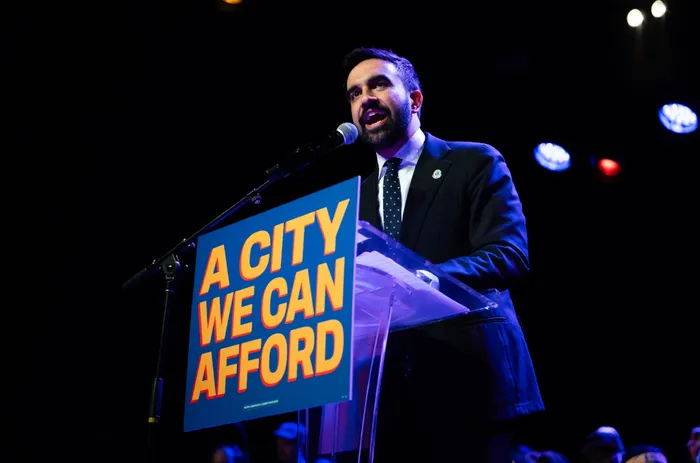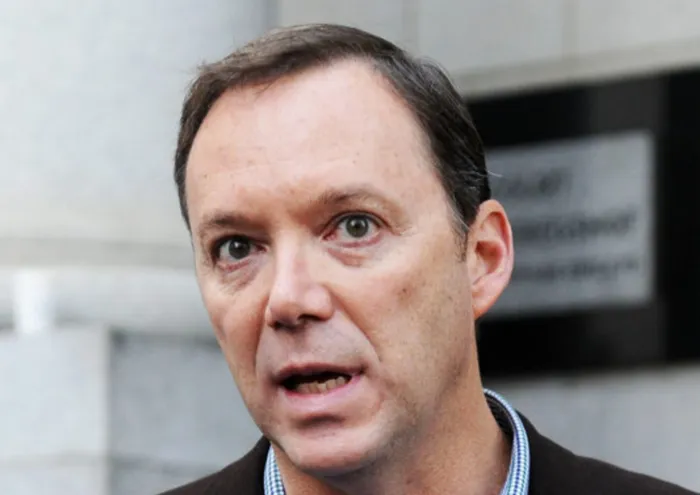Lessons from New York for SA's local government elections

In New York, Zohran Mamdani, aged just 34, is a self-described socialist who was virtually unknown before his upset victory to secure the Democratic nomination.
Image: Madison Stewart/Zohran Mamdani Website
Zohran Mamdani’s stunning ascension to the Mayorship of New York has captured the imagination of believers in social justice across the world, not least at the southern tip of Africa, where he spent some of his formative years.
Are there lessons for South Africa with its own local government elections scheduled for next year?
New York is very different from South African cities. In 2023, New York’s GDP exceeded $2.6 trillion, compared to Johannesburg’s $135 billion in 2022.
Although income inequality in New York is ranked among the highest of US cities, with a Gini coefficient of 0.52 in 2022, Cape Town’s Gini coefficient of 0.63 in 2021 was among the highest in the world. The Gini coefficient is a standard measure of income inequality, ranging from 0 (perfect equality) to 1 (perfect inequality).
There are also major differences in electoral systems. Mamdani, representing the Democratic Party, defeated the challenges of a Republican candidate and an Independent in this week’s poll, whereas dozens of party candidates will be on the ballot in South African metros.
And then there’s Donald Trump. In relatively liberal New York, Mamdani caught a wave fuelled by disgust for Trump’s populist bullying, genocide-sponsoring, othering, and prioritising of the interests of the rich.
South Africa doesn’t have a Donald Trump, but we do have the ANC led by a billionaire President, and off-the-wall inequality. This is where the interests of New York and South African voters begin to merge.
I do not believe that the majority of New Yorkers necessarily supported Mamdani because of the democratic socialist policies he proposed, but because they identified with him as a disruptor in the unholy and unsustainable relationship between money and political power. They identified with him not as an ideologue, but as the antithesis of the global lurch to the right.

Brett Herron
Image: File
That they came out to support him en masse is a measure of New York’s relative political maturity. When South Africans were once (or twice) presented with electoral opportunities to eject a provenly venal President, they lacked the maturity and political options to do so.
There are vast differences between the US and South Africa, but there is also a growing appreciation of common global challenges: finite natural resources, destructive climate change, vulnerability to viral pandemics, widening inequality, and increasingly destructive military technology. That lot, together with the development of AI and watching a genocide unfold live on television while nobody does anything to stop it, has contributed to a rising feeling that the unknown future we face is an existential threat.
By focusing on issues affecting poorer New Yorkers, such as promising to redistribute wealth, provide better public housing, and make the cost of living more affordable – while strongly opposing Israel’s genocide in Gaza – Mamdani set himself up as the thinking person’s counterpoint to madness, and as a generational pathfinder.
His is the generation dumped with the responsibility of cleaning up the destruction wrought by the generations of greed and consumptiveness that preceded them. Without a common purpose and a common consciousness of human interdependence, the world will slip further toward the cliffs of insecurity and unsustainability. At this major fork in the road, despite Trump’s exhortations to turn right, New Yorkers followed Mamdani’s proposal to turn left.
By electing him, New Yorkers voted against the establishment. Voted against class-based entitlement, division, exclusion, and inequality. Voted against xenophobia, homophobia, Islamophobia, Hispanophobia, and misogyny. Voted against the theory that local government elections are decided on local government issues alone. Voted for diversity, equity, and inclusion.
So, if they could, who would New Yorkers vote for as Mayor of Johannesburg and Cape Town? These are cities that, 31+ years after apartheid, remain crucibles of largely colour-coded entitlement, division, exclusion, and inequality.
This is where Mamdani’s election is perhaps most instructive. Although he represented a mainstream political party that traditionally controls New York, he didn’t express mainstream political opinions, and supporters of his party had other, more-establishment choices.
They chose him as their candidate because he was fresh, charismatic, accessible, honest enough to acknowledge mistakes, and sufficiently courageous to speak the kind of truths that those holding power find most uncomfortable. Whereas incumbency in high office is regarded as a strength in most political battles, he beat off the challenges of candidates with considerably greater public name recognition and profiles. And he did so as a Muslim, in Donald Trump’s America – a member of a minority representing the interests of the majority.
If South Africa’s electoral system were like America’s, Johannesburg residents could have the option next year of choosing between Dada Morero and Helen Zille, with Herman Mashaba standing as an Independent. I leave it to readers to decide to what extent, if any, these choices channel Zohran Mamdani, or the import of the moment.
* Herron is Unite for Change Leadership Council Member & GOOD Secretary-General